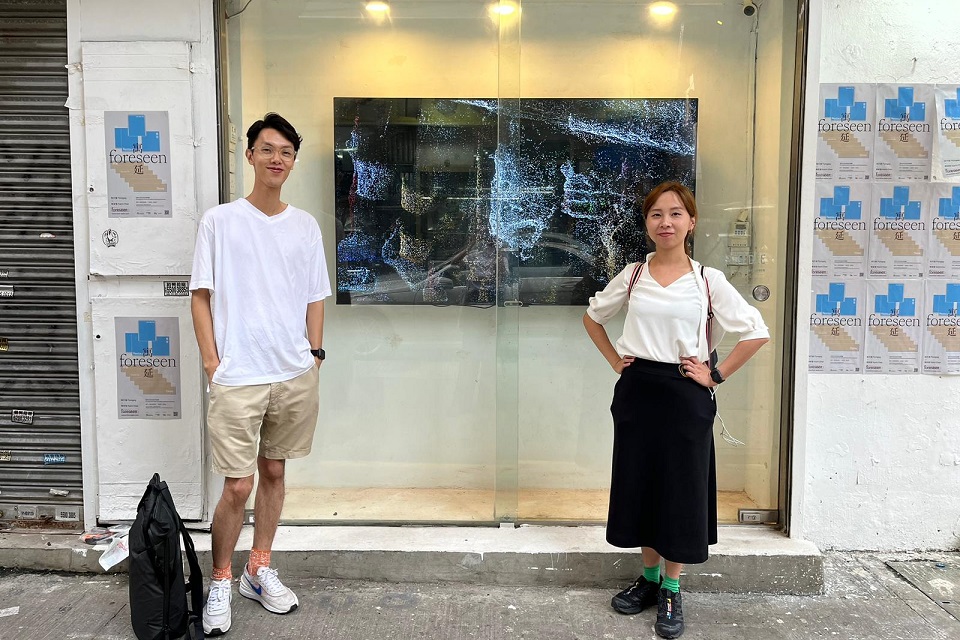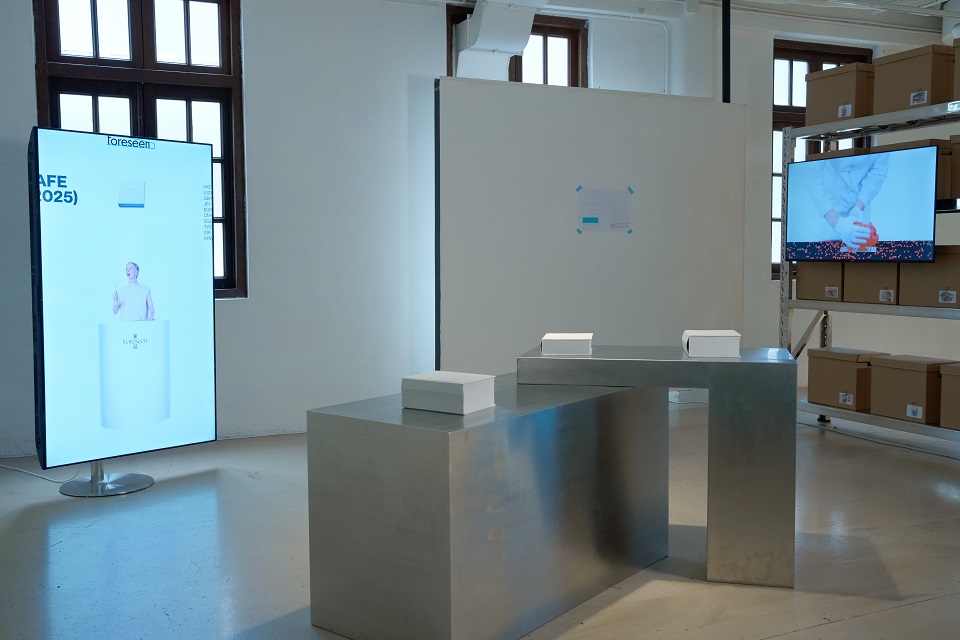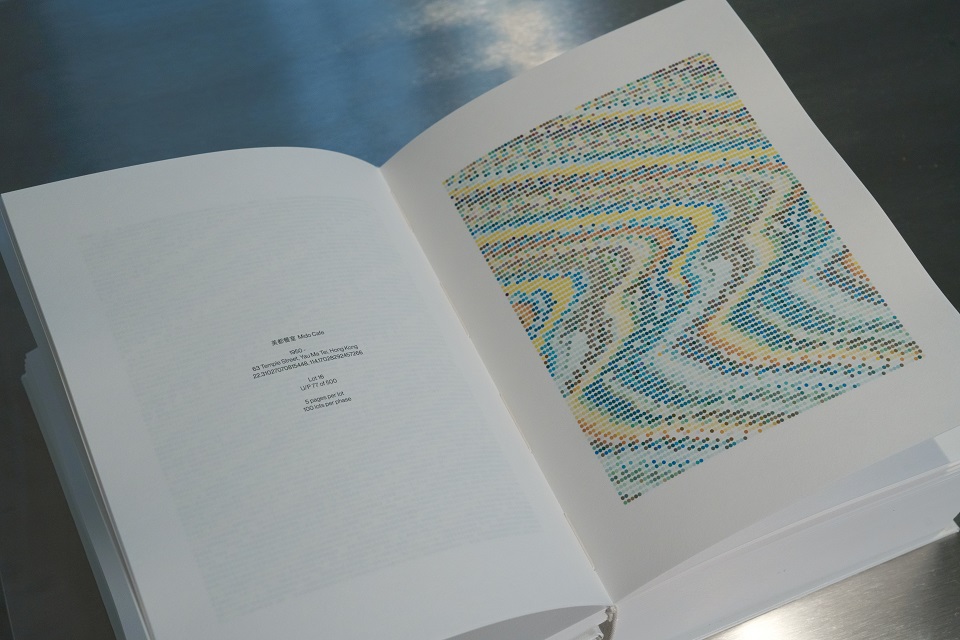Discover HKBU
Preserving old shops: from artistic illustration to digital modelling
28 Sep 2023
Stepping into the white-coloured exhibition hall, visitors are immediately surrounded by the atmosphere of a futuristic property showroom. Elegantly designed property brochures are displayed at the entrance, where a virtual property salesperson presents the offerings of local old shops. If you are interested in any of these old shops, you can sign a provisional agreement for sale and purchase. You will then become one of the proud custodians of the shop’s digital soul – its point cloud model.
The virtual property development project "Foreseen Property Agency" is a multimedia art exhibition held at the Fringe Club in Central in September. It is a collaboration between the renowned illustrator Ms Pat Wong Wing-shan (aka Flying Pig), Assistant Professor of the Academy of Visual Arts at HKBU, together with Mr Kachi Chan, Research Assistant Professor of the Academy of Visual Arts at HKBU, and a digital architectural artist. By using three-dimensional (3D) scanning technology and artificial intelligence (AI), they have created virtual 3D "point cloud models" of numerous old shops in Hong Kong. These models intricately archived the exterior façades and interior spaces of the shops, enabling the public to view them from different angles and awakening a collective sense of community conservation.
The project’s creative journey began in 2015, when Pat’s street-side sketches in Sham Shui Po not only caught the eye of the local shop owner but also intrigued property developers. This made her realise that nostalgia also has a potential commercial value, and that the two can co-exist. It opened up an opportunity for her to carry out the conservation of old shops and heritage.
Creating 3D point cloud virtual models for old shops
Pat and Kachi visited ten old shops in Hong Kong with decades of histories, such as Chu Wing Kee grocery store in Sheung Wan, Shing Hing Tai Rice Shop in Shek Kip Mei and Mido Cafe in Yau Ma Tei. They documented the spaces and stories of these shops with texts, illustrations and videos. They also taught the shop owners to use 3D tools to capture every corner of the shop through 360-degree spatial scanning. The BU team then utilised AI technology to reconstruct the scanned data into virtual 3D point cloud models. An online data archive of the old shops was then created and made accessible to the public.
Kachi says, “Points are the fundamental building blocks of geometry, where points form lines, and lines form planes. By producing 3D scans of the shops, we ‘quantify’ memories and transform each shop into a virtual form consisting of two to four million points. This digitised format preserves spaces and memories, and revives the appearances of the old shops.”
Reflecting on conservation through "property sale"
Another unique element of the exhibition is engaging participants in the property “pre-sale” activity. The team divides each old shop’s 3D point cloud model into point data and “pre-sells” it to participants. Buyers will receive a “provisional sales and purchase agreement”, and upon unfortunate closure or relocation of the old shops, they will be given a tangible memory in the form of a printed 3D point cloud.
It is a thought-provoking spin on social phenomenon through artistic creation. “Commercial property advertisements are more about projecting an ideal lifestyle than simply a product. This project, however, offers a different perspective,” Pat says. “The act of ‘handing over’ a digital property to buyers, paradoxically, signifies a shop’s disappearance in the real world.” This poses a challenging question to the participants on how to weigh their values between the economic interests and preservation.
The project is supported by the Hong Kong Arts Development Council, and is a funded project of the Design Trust Seed Grant. The project website is www.fore-seen.com.


